Tauten Line Welder Review [Strength Test Against Knots]
- By: Luke Simonds
- on
- Found In: Fishing Knots, Fishing Tips, Product Reviews, Terminal Knot (Loop)
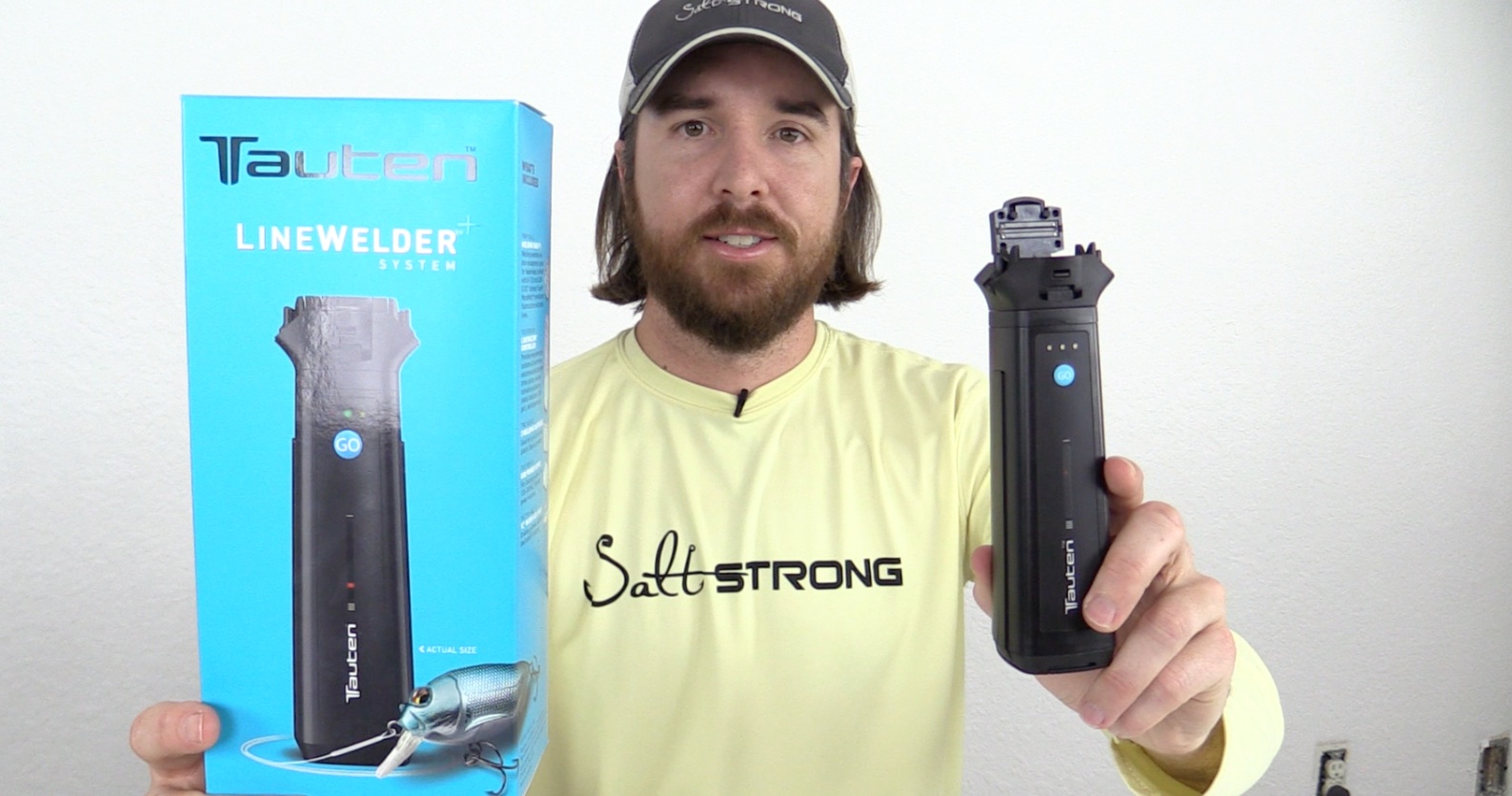
When I heard about Tauten’s Line Welder device, I was very interested to see how it worked.
Although I feel comfortable tying a variety of different fishing knots, I’m always eager to find a stronger option because the strength of our knots is an important factor, and it’s one of just a few that we as anglers have 100% control over.
Unfortunately, I couldn’t find any independent reviews of this new product, so we decided to go ahead and buy one to see how it worked ourselves.
For you see how it works, we went ahead and recorded the testing so that you can decide if it’s something that you’d like to have or not bother buying one.
Here’s what this Tauten line welder review covers:
- How it works
- How long it takes to weld a knot
- How strong the welded line is
- How much does it cost (up-front & cost per weld)
Since the claim on their website specifies that this line welding tool can be used on various types of line, we used a variety of different lines for this testing:
- 30 lb traditional mono
- 20 lb fluorocarbon
- 10 lb traditional mono
- 15 lb braid
So let’s get started…
How The Line Welder Works
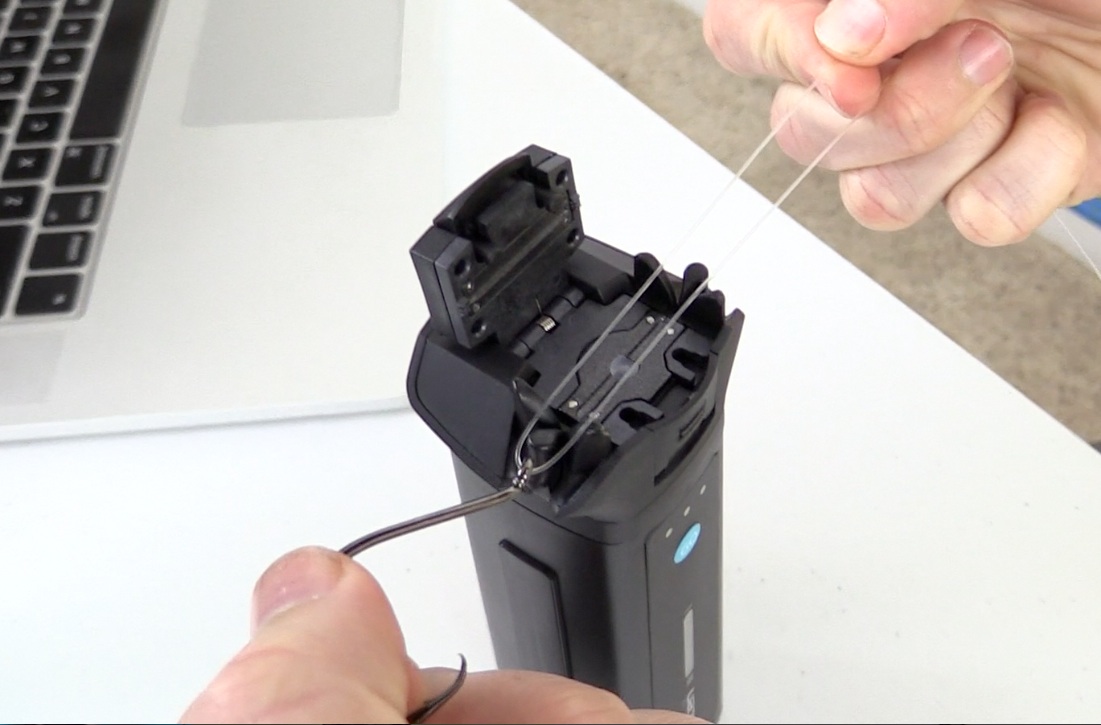
Tauten’s line welder works by heating up a proprietary material that comes in a cartridge which then locks the line into place after solidifying.
The process is very simple for the user… just a some basic steps:
- Place line in built-in slots at the top of the welder (pic above)
- Lock top lid in place so that the welding material correctly forms around the lines
- Wait for the weld to take place (green light is the signal)
- Open the lid and it’s complete
Tauten specifies terminal connections in its ads and on its website, so the testing you’ll see in the video below is focused on line-to-hook analysis.
However, I did an experimental test with welding a line-to-line connection as well to see if the line welder can be successfully used to connect a braided line to a leader.
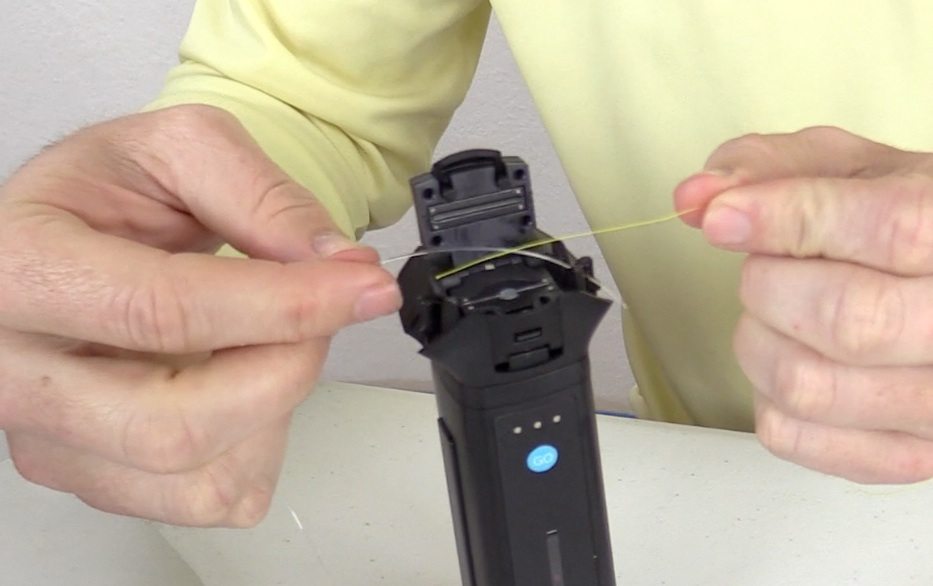
Many requests for this came in after we posted the planned review in the Fishing Tribe facebook group, so I tested a braid-to-leader weld and tested it against my favorite braid to leader knot.
How Long Does The Weld Take?
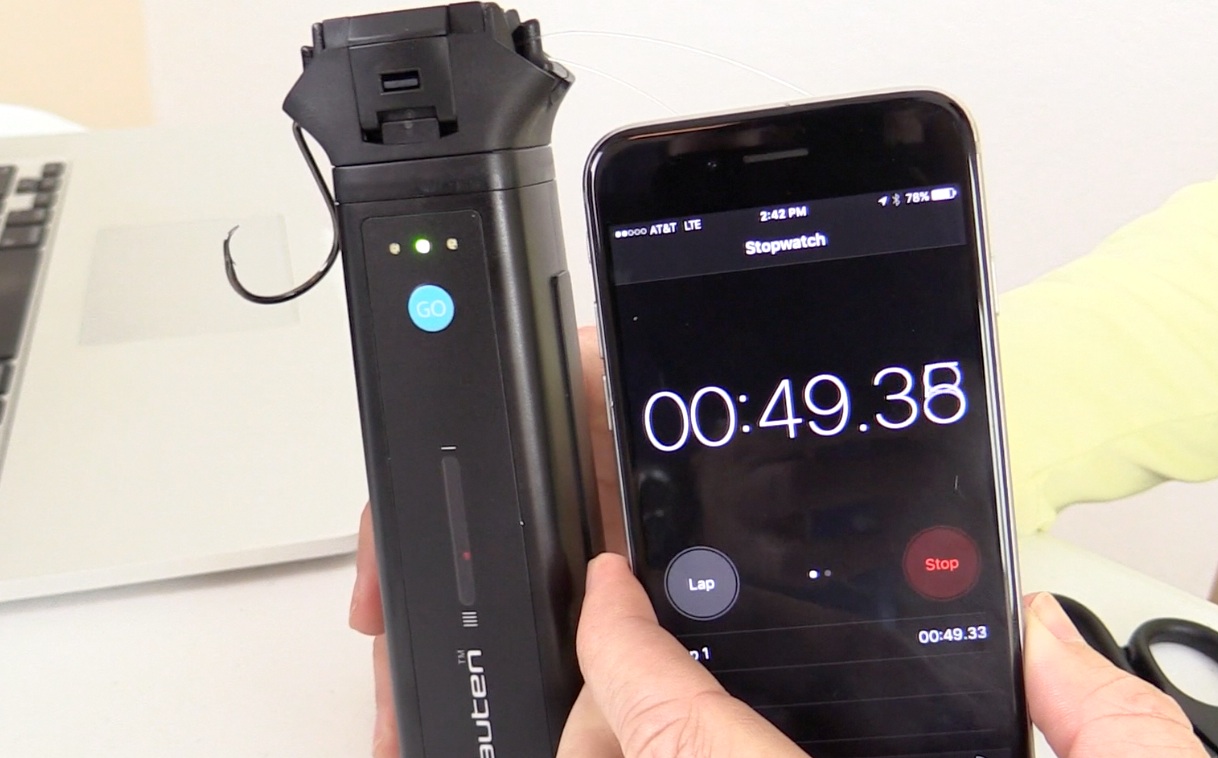
An important aspect of knots is the time it takes to make them… especially when being performed out on the water where every second is incredibly valuable.
So we of course had to test out the time it took for the weld to be completed and compare that to how low it takes a hand-tied knot.
Tauten’s website claimed that their line welding tool can complete the job in 40 to 50 seconds, and we found that to be accurate in our tests (pic above shows it completed at the 49 second mark).
But for those of us who tie knots frequently, 49 seconds is a long time.
For example, I used the Orvis knot as the main one in this testing since it’s very easy to tie while also having a great holding strength, and it clocked in at just 9 seconds which is significantly faster than the line weld.
Although the line weld tool takes longer than most knots (5x longer than many), the strength of a knot is more important than time so this 50 seconds can be a non-issue if the strength of the weld turns out to be a clear winner…
How Strong Is Tauten’s Line Weld System?
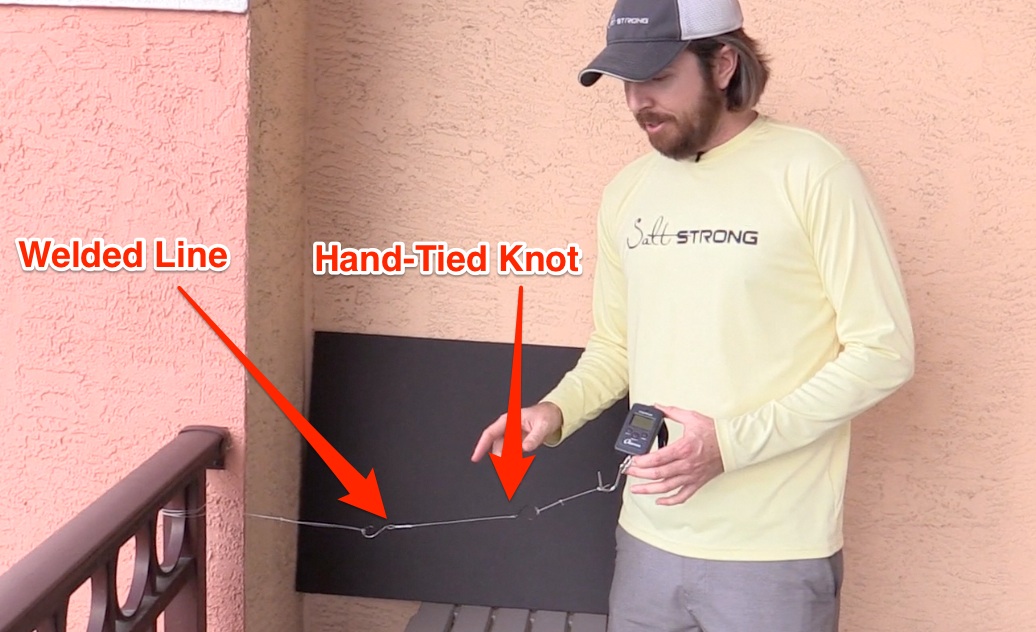
The strength of our fishing knots is incredibly important, so the time spent in learning the top knots and looking for others that may be better is a worthwhile investment in time.
So the core value of this line welding system is primarily focused on the strength of it’s connections.
As for the premise, it seems sound which is surely what prompted this company to invest time and money into developing this tool.
To evaluate the strength performance of this line welding tool, please watch the following video so that you can see how the analysis was done.
Note: Feel free to fast-forward to the 11:07 mark to go straight to the strength tests.
As you saw in the video, this line welding tool seems to be best for lighter lines.
Here’s a quick snapshot of what happened in our test:
- 30 lb traditional mono test: Orvis knot won
- 20 lb fluorocarbon line test: Orvis knot won
- 10 lb traditional mono test: Line weld won
- 15 lb braded line test: Uni knot won
- 15 lb braid to 30 lb leader test: FG knot won
Disclaimer: Most of these tests were done without spending time cleaning off the welded line with the cleaning cloths that were provided given that most anglers would never bother spending time wiping off line to tie a knot.
How Much Does The Tauten Line Welder Cost?
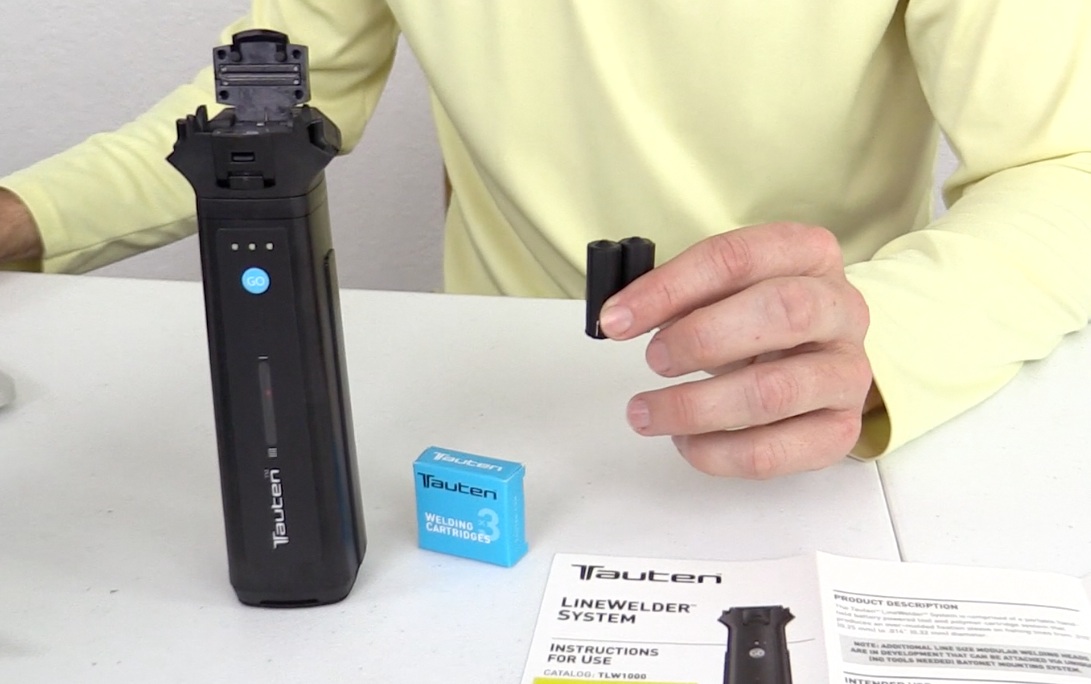
As with any product, price certainly needs to be considered before purchase. And it’s extremely important to factor in the long-term usage costs along with the up-front lump sum for purchasing the product.
So here’s the costs you should expect if you decide to get one of these line welder systems:
Up-Front Cost
It seems as if the price of this tool has been fluctuating, but that’s fairly common with any new product.
Currently, the cost of the Tauten line welder system is $199.95 per their website.
And this includes the full set of items that are shown in the video above.
Usage Costs
What surprised me most was the cost of replacement cartridges that are necessary to create the welds.
Because a pack of 3 is listed at $11.99 and a pack of 12 is listed at $35.97 (direct from their site).
And it lists each cartridge as good for creating 12 welds each.
So the cost per weld is:
- 3 Pack: $0.33 per weld (11.99/3/12)
- 12 Pack: $0.25 per weld (35.97/12/12)
Conclusion
The premise of the Tauten line welding tool made me very interested in trying it out.
Because who doesn’t want to get stronger connections to our hooks/lures with less effort and higher consistency?
But after testing out the strength, speed, and costs of using this line welding tool, I’m personally going to pass in using it out on the water.
That being said, I did find that the connections for light mono were very impressive so that product itself is not bad.
It’s just that such a large up-front cost along with a continual usage costs of buying new welding cartridges makes putting some time in to learn how to tie knots much more appealing.
Also, the size of the weld is very large (MUCH larger than a standard knot size… especially on light line).
But for those who are unable to tie knots (or uninterested in learning), this product would be a powerful solution given how easy it is to use.
For any questions, please leave a comment below. Tight Lines!
Note: Here are links to the two knots used in this video:
- Orvis Knot (great for terminal connections with mono/fluoro lines)
- FG Knot (great for braid to leader connections)
P.S. – If you’re interested in finding the strongest knots for each type of line connection need, then be sure to check out the following page because it shows a rankings of the best knots.
Go To Our Knot Testing Homepage [Full Knot Rankings]
Related categories:
STOP WASTING TIME ON THE WATER!
Do what the “SMART ANGLERS” are doing and join the Insider Club.
Here’s what you’ll receive today when you join:
- Weekly fishing reports and TRENDS revealing exactly where you should fish every trip
- Weekly “spot dissection” videos that walk you through all the best spots in your area
- Exclusive fishing tips from the PROS you can’t find anywhere else
- Everything you need to start catching fish more consistently (regardless if you fish out of a boat, kayak, or land).




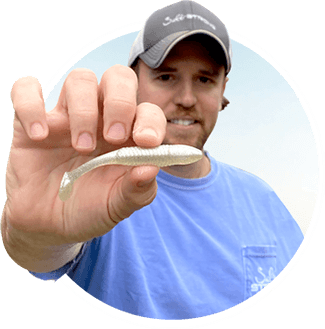


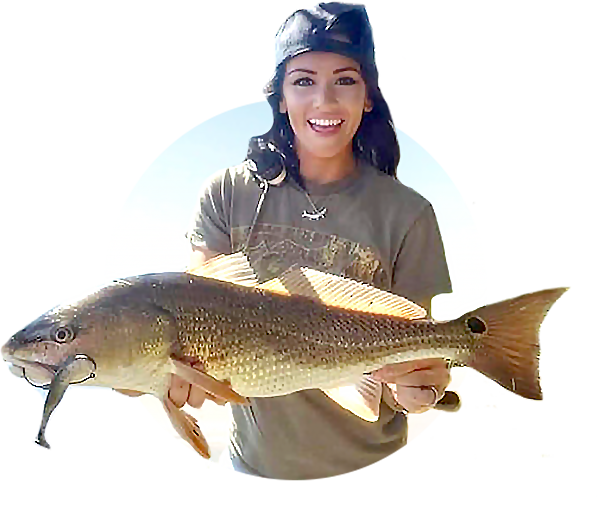
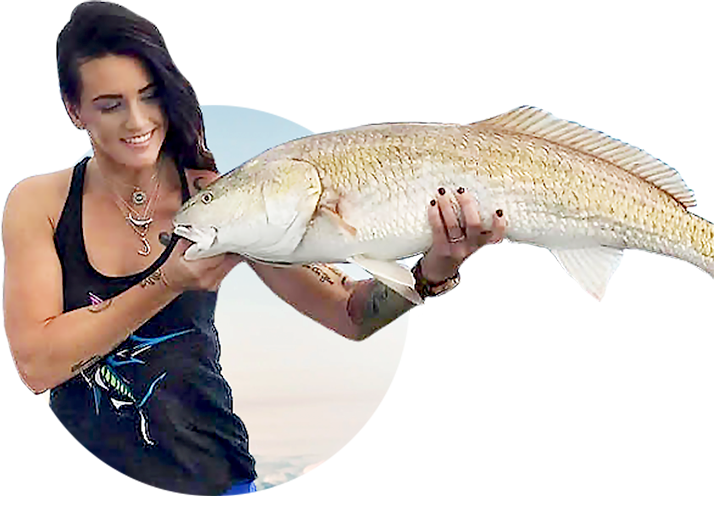

Enjoyed the Tauten review. My husband cannot see well enough to tie knots, never mind his manual dexterity.
The review was a few years ago. Can you recommend any other knot tying systems?
Does the Tauten work for 100 lbs lines?
The tauten line welder system we got could not handle 100lb lines.
I looked at Tauten’s facebook and instagram and noticed a lot of fish being caught. https://www.instagram.com/tauten_sports/ My question is: Why don’t fish see the hook if there so smart? Or the bills? Tauten has a point in that knots weaken lines. Your thoughts?
Yes, I absolutely agree that knots form weak points in the line because they torque the line into hard turns where a single point in the line will get faced with forces from multiple angles while at the same time getting constricted by the knot.
The core question is what type of glue or weld can be enough to successfully hold the lines together without slipping or compromising the lines any less than what a good fishing knot does.
And if such a glue or weld does exist, how much strength does it add and/or how much time does it save in order to justify whatever price is charged?
As for fish being smart or dumb, that of course all depends on the fish and what is going on in their environment at that time. For example, some redfish will turn away from a live bait that doesn’t swim right while others will strike at something as unnatural as a pair of pliers with a hook tied to it as shown in this funny video: https://www.saltstrong.com/angler-catches-redfish-casting-pliers.
The core goal of course is to find what can get those finicky fish to eat most consistently because that will catch both the fish that are in max feeding mode as well as the others that aren’t aggressively feeding.
Luke, I just watched your video on the welded knots, even if they did work; can you really tell me the fish are not going to see the size of that weld? No way I would ever spend even 1/2 of the cost of that welder @ $99. for my catch ratio to be obliterated by the size of those welds. Don’t you agree??
I personally enjoy tying knots, so it was not going to be a fit for me unless it saved a lot of time or if the strength of its weld was significantly better than my knots. But I enjoyed testing it out and hope that they can find a way to increase the welder’s performance on larger (more than 14 lb) lines.
Great review.
I spoke with the rep at a fishing show last month and also being a gadget guys, who loves his toys. At first site I thought to myself that it might be handy to make a bunch of leaders ahead of time. The thing that stop me was I asked the price of the line cutters they also sell, because they looked and felted great. The rep told me $150 and tried to justify it was scary. That’s when I asked the pics of the welder, and followed it up with probably all the test you just performed. The rep didn’t seem confident that it would beat hand tied knots. I like the concept, but I think maybe thier next generation of this will be better. Smaller welder, slimmer welds, and hopefully a stronger welding material. Thanks again for the review, I was think of giving it a go at the upcoming New England fishing show, but I’ll make sure to skip the tables till they improve.
Thanks for making time to leave a comment on this line welder review. Sounds like they have a new top coming soon that’s designed for larger lines. I’ll be sure to post an update if I get my hands on one to test out.
Tight Lines!
Hey Luke……you’re far to kind to the Tauten folks. Between the initial cost, lower weld strength and much wider welds (which I’m sure will spook any red tempted to inhale my lure in 2 feet of clear water), this product makes no sense to me.
My goal with this line welder review was merely to present the facts as I found them and to stay as unbiased as possible.
Pretty cool review. Thanks for taking the time to walk through this as Tauten’s web ad placement for this must involve a huge ad buy. Thus line welder shows up everywhere when I read news and parse through web search results.
The review results wound up right where I imagined it would. Nice tech, but not practical for the wider market. Basically for inshore you can thrive only knowing three to five knots and they all perform well, incurr no incremental cost, and are easy to learn. And whether you are tying a $15 lure to your line or a $1500 kayak to your luggage rack, you had better get comfy with them and confident in your results.
Looks like a solution looking for a problem or a quite possibly a great help for someone with arthritis or physical challenges of the hands.
I was surprised that it did not do better with larger diameter lines. I figured it would not be fiesable for everyday fishermen, but might have a niche among professional/commercial fishermen.
Thanks for making time to leave the nice comment.
I spoke with a representative at Tauten Sports earlier today and he said that they’re coming out with a larger top piece that can support larger diameter lines.
Once it come out, I’ll be sure to test it out against some of my favorite knots to see how it does. I’m hopeful that it’ll perform well. Tight Lines!
To me, the “art” of tying a “good” knot is part of being a “good” angler. Perhaps this $200 line welder (+ cost of re-fills) has some application for some types of anglers/angling, but not for me.
For inshore saltwater kayak fishing (mostly reds, trout and snook) using braided line and fluoro leader, natural baits as well as artificial lures, I do just fine with no more than 3-4 different knots. I can’t recall the last time I experienced a lost fish due to knot failure.
Yes, I agree that only a few knots are needed for most anglers to have top quality knots for the various different connections. Tight Lines Richard!
Luke,
Even if the weld performed similar to the hand tied knot, doesn’t the size of the weld bother you?
Yes, the size of the line weld was much bigger than I would have preferred.
These reviews are great. I am a gadget guy and too often buy products like this only to have them end up in a box in my pole barn. Thanks for saving me $200. Keep these coming.
I’m a gadget guy as well and enjoy making reviews like this. Many more reviews will get posted throughout the year.
Tight Lines!